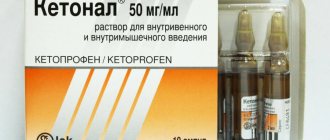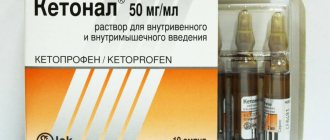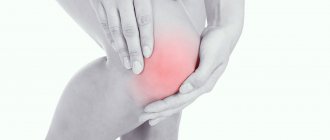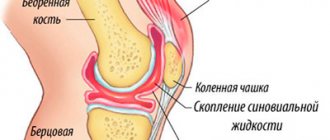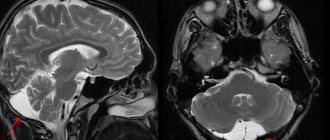Mechanism of occurrence
Mechanism of occurrence
If pain is detected in the shoulder joints of the arms, treatment must be prescribed taking into account the development mechanism.
Why pain occurs, main reasons
The appearance of pain in the shoulder area is not an independent disease, but a clinical manifestation of the influence of a significant number of different provoking factors, which include:
- Aseptic inflammation affecting various structures of the shoulder (nerve fibers, capsule, cartilage tissue of the joint, tendons, muscles).
- Joint infection (bacterial arthritis).
- An autoimmune process that is the result of a violation of the functional state of the immune system, in which antibodies are produced to the body’s own tissues, in particular to the connective tissue structures of the musculoskeletal system with the development of an inflammatory reaction in them.
- Degenerative-dystrophic processes with destruction of cartilaginous structures (arthrosis).
- Systematic significant exposure to physical activity.
- Previous injuries to the shoulder area affecting various structures (dislocation, subluxation, sprain of ligaments, capsules, fracture of the bone base, severe bruise).
Referred pain may also appear, which is the result of the development of a pathological process of another localization in the body (pain in the left shoulder with angina, referred pain with pathology of the cervical spine on the right or left).
Causes of pain in the hand with osteochondrosis of the cervical spine
At first glance, pain in the arm and osteochondrosis are not related in any way. But the fact is that such a symptom as a painful sensation in the upper extremities can accompany cervical osteochondrosis due to the fact that the peripheral nerves that are located in the spine also regulate their activity.
What is cervical osteochondrosis
Osteochondrosis is a disease affecting the articular-cartilaginous system. The disease itself is very insidious, since pain is felt only during the transition to the active stage.
As a rule, intervertebral discs are affected. Their dystrophy is the cause of smoothing. The movements, in turn, compress the nerve roots from the spine, and then there is inflammation of the muscles, which further compresses the nerve endings. As a result, weakness and pain in the hand occurs. In some cases, normal blood flow in the upper extremities may even be affected.
Most often, you can find that osteochondrosis of the cervical spine is characteristic of people who often need to sit in an uncomfortable position (for example, with their head bowed).
How does your hand hurt?
The sensations that patients experience in the hand are not the most pleasant:
- Numbness up to loss of sensitivity;
- Trembling;
- Painful symptoms and their increase as you move;
- Pale skin (due to vascular spasms and poor circulation);
- The hands seem to be welded together.
Basically, the above symptoms appear in the morning. It should also be noted that often only one hand is involved in this process - but this is not necessary.
Pain and numbness in the left hand may indicate problems in the heart. If you are also elderly, then the diagnosis is carried out for the presence of disorders specifically in the area of the cardiovascular system. The diagnosis may not reveal any pathology, but the pain and numbness still persist.
The situation is more complicated when a person has both osteochondrosis and heart disease. By the way, the heart can also hurt with thoracic osteochondrosis, but here, too, there are differences.
But pain and numbness in the right hand can be confused with Raynaud's disease. This is nothing more than vasospasm, leading to the above symptoms. No other painful sensations are felt anywhere except the site of inflammation.
Diagnosis and treatment
If symptoms are detected, you should contact a neurologist or vertebrologist. After all the symptoms are described, a correct diagnosis will be required. It is diagnosed on the basis of CT and MRI. These methods make it possible to distinguish a number of diseases such as metastases from intervertebral hernia.
Treatment in this case is conservative and complex, and it must be started as early as possible due to the fact that the disease tends to develop into a chronic one.
Treatment consists of:
- Use of non-steroidal anti-inflammatory drugs (Diclofenac, Ibuprofen, Analgin, Ketorolac);
- Using patches to reduce pain;
- Using medications and vitamins to improve blood supply and strengthen capillary walls (B vitamins, Pentoxifylline);
- Use of blockades;
- Physiotherapy (ozokerite, electro- and magnetic treatment);
- Exercise therapy (but only during the period of retreat of the disease, since it is very important that painful symptoms are not felt);
- The use of such a pleasant procedure as massage also brings very good results.
And only if conservative methods do not provide any tangible improvement, surgical intervention in the body can be applied.
Prevention
Of course, it is always better to take precautions to avoid any problems. Therefore, prevention, which consists of leading a healthy lifestyle, is no less important.
Good prevention is active rest, physical and breathing exercises without excessive stress, a healthy diet, and, in addition, correct and comfortable postures, both during night rest and during the day.
Massage as a preventative measure is also necessary for the body. Author: K.M.N., Academician of the Russian Academy of Medical Sciences M.A. Bobyr
Diagnostics
Diagnostics
For the differential diagnosis of reflected pain, electrocardiography (ECG) and methods for visualizing the structures of the cervical spine are used.
How common is pain when abducting the arm?
This symptom is recorded predominantly in men, especially those in the age range of 40 years and older, although it can also be observed at a young age. Those most susceptible to it may be:
- young people after shoulder injury;
- elderly people (due to natural age-related changes in the musculoskeletal and joint system);
- representatives of professions that involve lifting and carrying heavy objects (for example, loaders, builders, blacksmiths);
- people performing monotonous non-standard movements with shoulder tension (for example, when painting a room, etc.);
- professional throwing athletes (for example, volleyball players, discus or javelin throwers, tennis players);
- computer scientists and people who work on laptops for a long time (due to inactivity and the predominance of a forced posture).
Pain in the shoulder joint - treatment
Treatment of a disease accompanied by pain of varying degrees of severity and nature in the shoulder area is necessarily comprehensive. It includes several main areas:
- Etiotropic therapy is a set of measures aimed at eliminating the influence of the main causative factor. It can be conservative or include various surgical techniques.
- Pathogenetic therapy - with the help of drugs, the main pathogenetic mechanisms of the formation of pain syndrome are influenced.
- Symptomatic therapy is treatment aimed at reducing the severity of clinical manifestations of the pathological process that worsen the patient’s quality of life.
General directions of therapeutic activities usually complement each other and can be intertwined. Often, one pharmacological group of drugs is used for symptomatic and pathogenetic therapy - non-steroidal anti-inflammatory drugs. The choice of a set of therapeutic measures is made by the doctor based on clinical symptoms, as well as the results of additional diagnostic tests.
Pain in the shoulder joint of the right arm - treatment
Pain in the right shoulder is often of traumatic origin. After diagnosing the nature and localization of the violation of anatomical integrity, complex conservative and surgical treatment can be prescribed, aimed at restoring tissues and structures, as well as their functional state.
After preoperative preparation (including the prescription of various medications that improve the general condition of the patient’s body, as well as drugs to prevent postoperative complications, in particular bleeding and secondary bacterial infection), open access surgery or arthroscopic surgery is performed. It is less traumatic.
In the case of inflammatory origin of pain, conservative drug therapy is predominantly used, as well as physiotherapeutic procedures (magnetic therapy, ozokerite, mud baths, electrophoresis with anti-inflammatory medications). They help reduce pain in the right shoulder joint.
Treatment may vary in duration, depending on the severity of the traumatic or pathological injury, as well as the surgical technique performed.
Treatment of pain in the left shoulder joint
Clinical diagnosis
- The pain is localized in the anterior or external aspect of the lateral epicondyle. It usually radiates along the wrist extensor muscles. May vary in frequency and strength. Discomfort increases with wrist movement and finger extension.
- The range of motion is rarely limited, but in later stages the pain increases with elbow extension and hand pronation.
- Weakness of grip is also an additional symptom.
- Special orthopedic tests are performed by an orthopedic traumatologist to confirm the diagnosis.
Diagnosis involves performing various measures (depending on the stage and complexity of epicondylitis). In particular:
- Consultation and examination with a doctor, analysis of complaints, performance of tests.
- To exclude third-party diseases, radiography is performed, which determines the presence of calcium deposits near the epicondyle.
- Ultrasound examination - visualizes the size and exact location of the ligaments.
- MRI (magnetic resonance imaging) - helps to examine inflamed areas and determine the localization of the process.
- Consultation with a neurologist, electromyography.
Treatment of pain in the left shoulder joint
Treatment of pain in the left shoulder joint
Discomfort in the left shoulder is also quite the result of a previous injury, and therefore sometimes requires surgical intervention. In modern medical clinics, it is performed using arthroscopy (a diagnostic and treatment technique in which a tube with a camera and lighting is inserted through small incisions; under visual control on a monitor, the doctor performs the necessary manipulations with microinstruments).
Conservative treatment of pain in the shoulder joint of the left hand is carried out with the help of non-steroidal anti-inflammatory drugs, chondroprotectors, vitamins, and physiotherapeutic procedures in the case of diagnosed inflammatory or degenerative-dystrophic processes.
Referred pain requires the implementation of therapeutic measures aimed at normalizing heart function in case of angina pectoris or restoring the relationship of the structures of the cervical spine in case of osteochondrosis.
Muscle pain in the shoulder joint - treatment
Muscle pain syndrome often occurs against the background of aseptic inflammation. In this case, anti-inflammatory drugs and physiotherapeutic procedures in the form of dry heat or infrared radiation are prescribed.
Worried shoulder joint, pain when raising the arm - treatment
If, when trying to move the shoulder with the arm raised upward, discomfort and crunching occur, then SLAP syndrome usually occurs, characterized by traumatic or pathological damage to the lips of the glenoid cavity, increasing its depth. Therapeutic measures in this case include surgery using arthroscopy.
If pain and crunching develop in the shoulder joint, treatment may include the prescription of anti-inflammatory drugs and chondroprotectors to reduce the severity of degenerative processes of cartilage tissue.
Severe pain in the shoulder joint - treatment
Treatment of acute shoulder pain usually involves the use of nonsteroidal anti-inflammatory drugs.
How does pain manifest when the arm is abducted?
Pain when abducting the arm often becomes an attribute of many serious pathologies of the musculo-ligamentous apparatus of the shoulder joint. Therefore, this symptom, to one degree or another, may be accompanied by:
- defeat from the working hand;
- painful sensations on palpation;
- localization of pain along the anterolateral humeral surface;
- increased pain at night;
Often pain when abducting the arm is characterized as:
- strong;
- aching (pulling character);
- spicy.
Severe pain in the shoulder joint
Severe pain in the shoulder joint
If it occurs against the background of an injury, then measures must be taken to reduce the mobility of the shoulder (immobilization with a splint or applying a tight bandage to the shoulder) and reduce the severity of tissue swelling, which increases pain. This is done by applying local cold in the form of an ice pack or wetting the injury area with cold water.
Significant intense pain that is not relieved by conventional means requires the use of narcotic painkillers.
Symptoms.
The first manifestations are usually minor. The patient experiences periodic discomfort and unpleasant sensations after loading the shoulder joint. Pain gradually arises and increases, disturbing even at rest. Symptoms go away on their own in 90% of cases within 1-2 years.
- The pain symptoms are of a certain nature, similar to a burning sensation, and quite intense. First it is localized in the elbow area, then spreads to the forearm and shoulder. There is a possibility of swelling. With lateral epicondylitis, pain occurs when the hand is extended, and with medial epicondylitis, pain occurs when the hand is flexed.
- An important symptom is muscle weakness, the inability to perform certain movements associated with grasping and holding objects.
- The functions of the entire limb are affected. The flexion and extension of the forearm, the functions of the hand and fingers are difficult. The pain becomes unbearable and prolonged.

